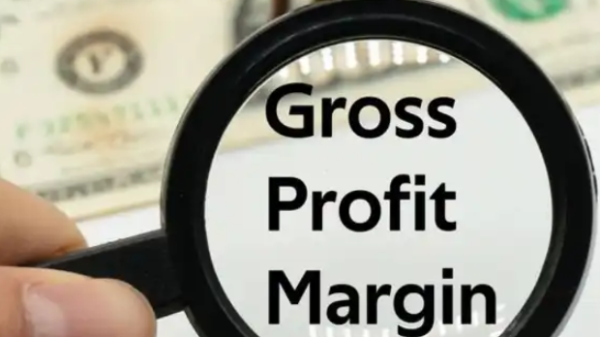
Product Development Process
Not even the most prosperous e-commerce companies can claim that the path to a final product is always a straight one. For individuals who aspire to become entrepreneurs, the new product development process may appear enigmatic. Market research, product management, and a ton of trial and error are all necessary for effective product development. There are certain best practices that entrepreneurs follow on the path to launching a company and fulfilling orders, even if each tale is unique. Let’s explore them.
What is the Product Development Process?
The procedure of creating a new product beginning from its conception to its actual launch into the market is referred to as the product development process. It involves introducing an old product into a new market or reviving a previously existing market. It consists of market needs assessment, strategic planning, the generation of an idea, its introduction to the market, and, finally, the collection of users’ feedback.
New product development (NPD) is the procedure of making a completely new product for the market and for the customers. The process is iterative and unbroken up to the end of the product life cycle. After the product is launched, you can carry on the new product development process by gathering user input, making changes to the product, and creating new versions.
Step-Wise Guide to New Product Development Process
Idea generation
Many would-be business owners become stuck during the ideation and brainstorming phase of the product development process. This is often the result of their waiting for a eureka moment that will identify the ideal product to market. It is possible to be artistically fulfilled by creating something essentially “new,” yet many of the best ideas come from improving upon an already-existing product.
By posing inquiries about current items, the SCAMPER model is an effective method for rapidly generating novel ideas. Every letter represents a prompt.
- Substitute
- Combine
- Adapt
- Modify
- Put to another use
- Eliminate
- Reverse/rearrange
Market Research
Failure can result from launching production before thoroughly testing your concept. Product validation guarantees that you won’t squander resources on a non-viable idea. You can validate your product ideas in a number of methods, such as given below.
- Crowdfunding Campaign
- Online Survey
- Utilising Google Trends for market demand
- Measure interest by pre-orders
Obtaining feedback from a sizable, objective audience is crucial. Competitive analysis can also be used in validation research. There are probably competitors existing in that field if your idea or speciality has the potential to gain market share.
Before you begin planning, you may determine the level of competition and the demand for your product using the data gathered by conducting market research and product validation.
Create a plan
The product development process may get difficult very quickly, therefore it’s critical to prepare well before starting to build your prototype. A detailed product roadmap can often prove beneficial at this point.
Starting with a hand-drawn sketch of your product’s design is the best way to start planning. Labels describing the various features and functions should be included in the sketch, which should be as detailed as feasible.
Build A Prototype
Making a completed product to serve as a sample for mass manufacturing is the aim of the prototype stage of the product development process. Generally speaking, prototyping entails trying out multiple iterations of your product, gradually removing possibilities, and refining the final example until you’re happy.
Digital ideas can now be translated into actual samples more quickly and cheaply than with the old-fashioned mould-making process thanks to the advancements in 3D printing.
Source Supplies and Collaborators in Manufacturing
After you’re happy with the product prototype, it’s time to start gathering the supplies and finding the collaborators required for manufacturing. Establishing your supply chain involves assembling the suppliers, tasks, and materials required to make a product and deliver it to a consumer.
Use these sourcing best practices to locate suppliers or manufacturers.
- Take into account partners for warehousing, transportation, and storage.
- Locate several vendors for the various supplies you’ll require in order to evaluate prices and make backups.
- Attend sourcing-focused trade exhibitions. Talk about materials and establish a personal rapport with suppliers; this will help you later on when it comes to haggling over rates.
- Compare the benefits and drawbacks of sourcing domestically and abroad.
Evaluate Costs
By now you should be aware of the approximate cost for manufacturing the products you want to produce. Costing on the other hand is a sub-process of business analysis that involves collecting all the information that will be needed in the determination of your COGS, your retail price, and the gross margin.
You can determine your product’s price after you’ve computed your total costs of goods sold.
Launch your product
You now have a successful and lucrative product that is prepared for the market. The final phase of this process is to launch your product onto the market. A product development team will now turn the keys to marketing in order to launch the product.
WHY Shopify For Product Development Process?
User-friendly
Since the platform is designed specifically for e-commerce, it is perfect for companies who prioritise online sales. The ease of use of the application means that creating an online store and selling products, as well as its modification, takes less time than it is usually required.
Customisation
Due to the wide variety of apps that exist within the Shopify environment, companies can adjust the specific characteristics of this platform based on their needs. Shopify’s app store offers a plethora of alternatives to improve operations and customer experience, whether it is through the integration of marketing tools, analytics, or customer care systems.
Scalability
It is an important draw for growing companies. Both huge organisations with complex needs and small startups just entering the market can be served by it. Because of the platform’s dependability and security characteristics, businesses can concentrate on growing without having to worry about their technological infrastructure.
Support
Shopify provides extensive customer service, online forums, and instructional materials as well as a wealth of resources. For companies looking for advice on streamlining their processes and overcoming the difficulties of online retail, this support system is priceless.
So what are you waiting for? Try Shopify Today!
Conclusion
Every industry has a distinct set of peculiarities involved in producing something new, and every product development process is distinct from the next. Whatever it is you’re developing, you may position yourself for a good end product by taking the essential steps to prepare. Shopify is distinguished by its easy-to-use interface, copious customisation options, scalability, and strong support system. For companies trying to optimise their internet presence and streamline their product development processes, this makes it the go-to option.
For more information visit Hermagic.
FAQs










































































